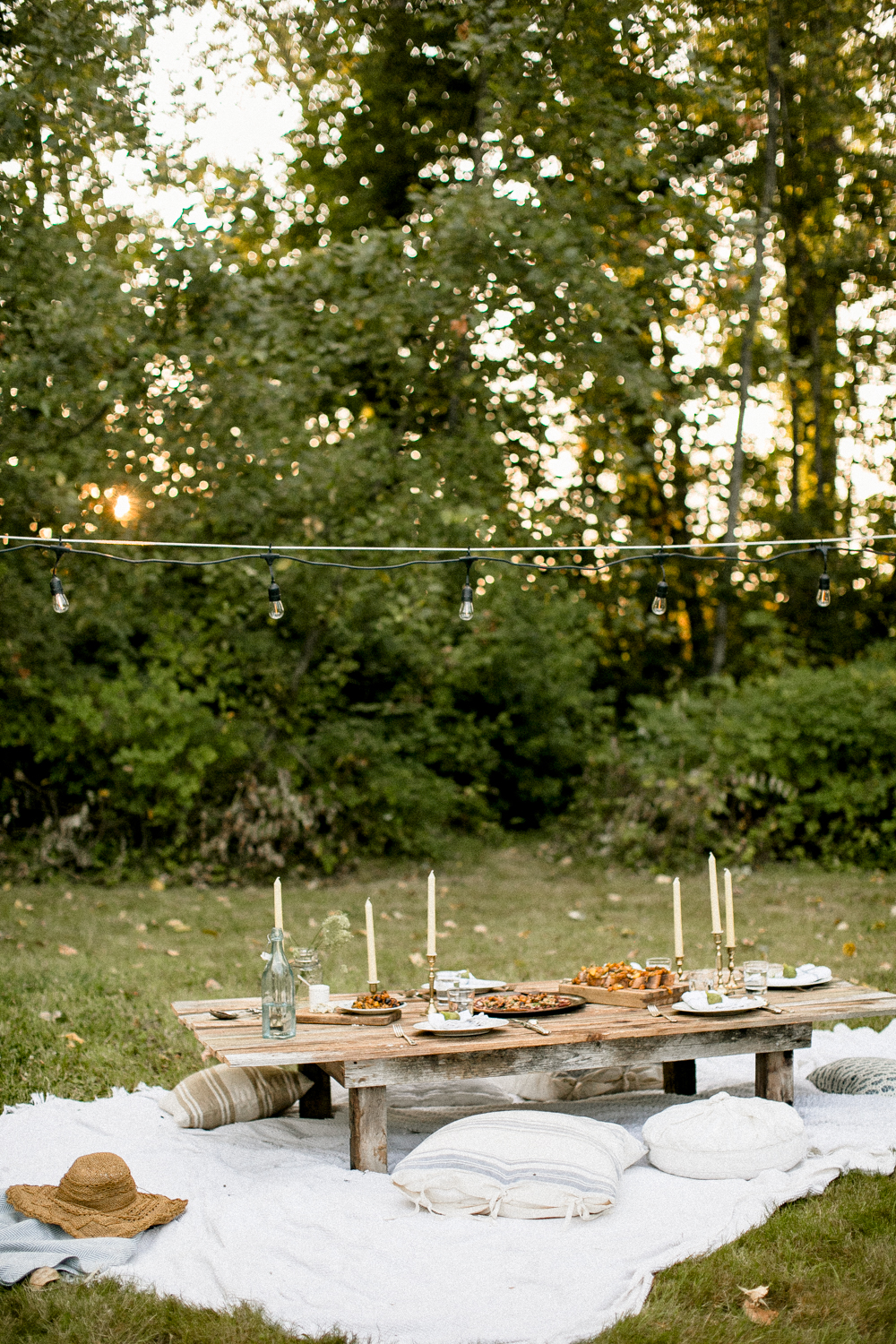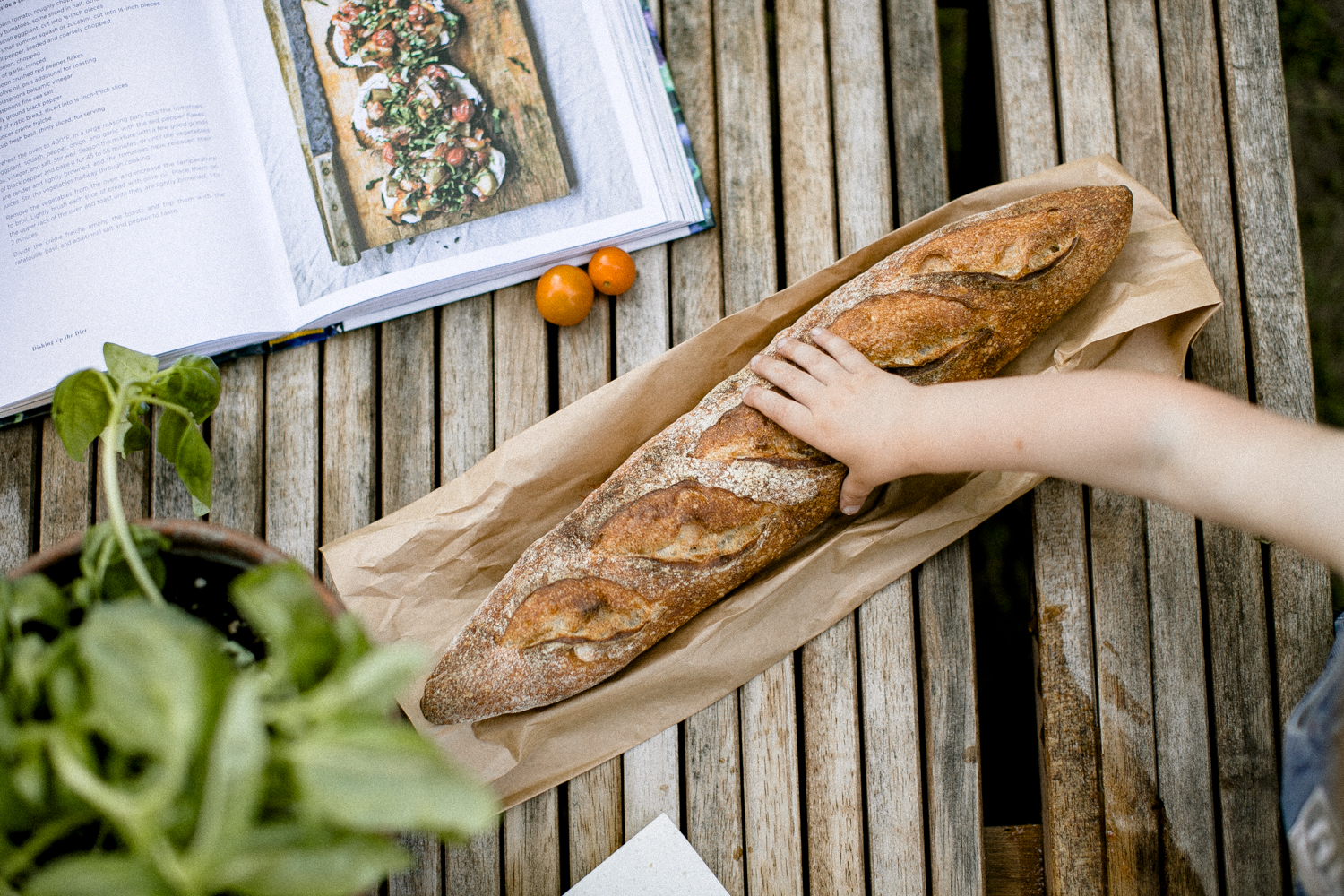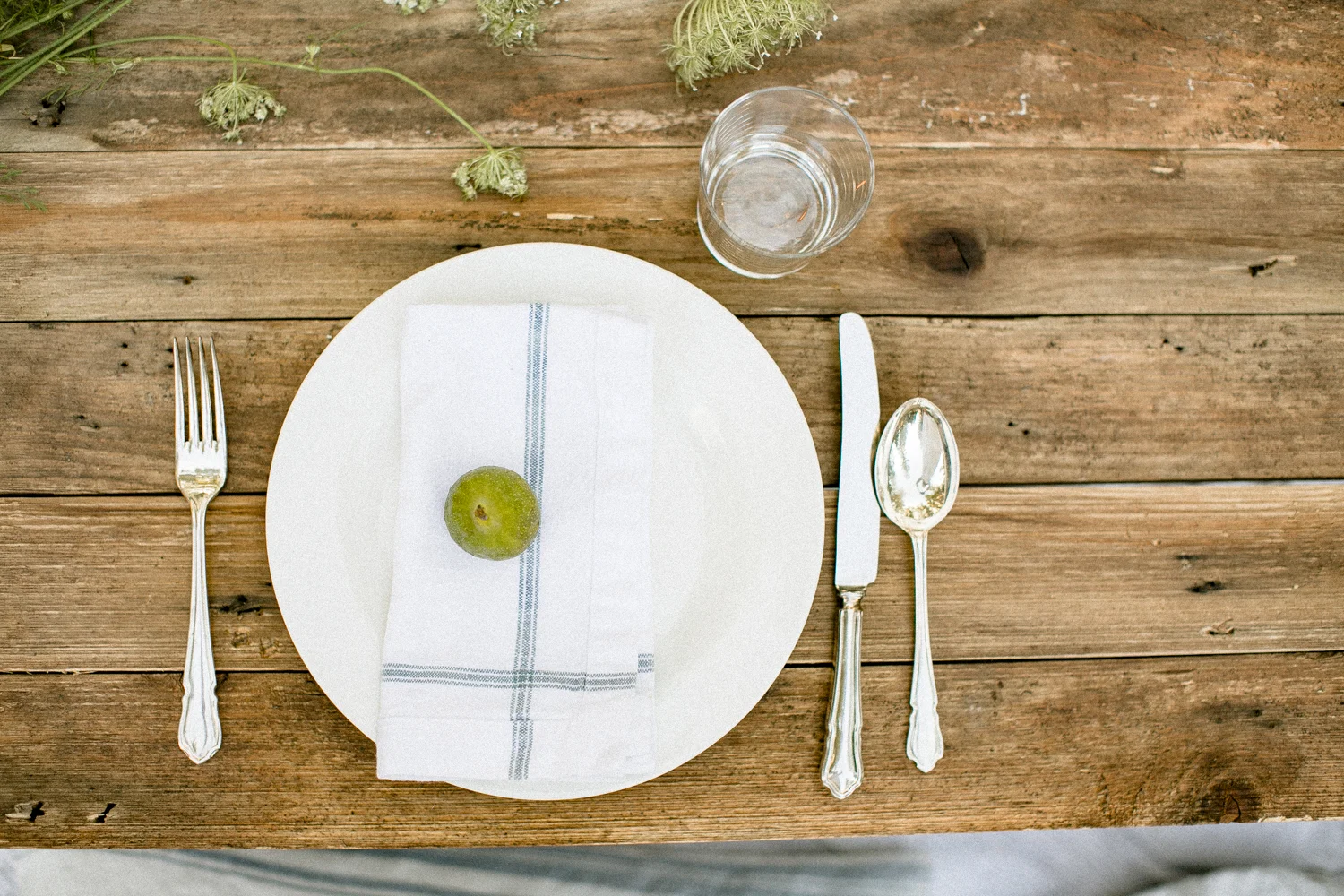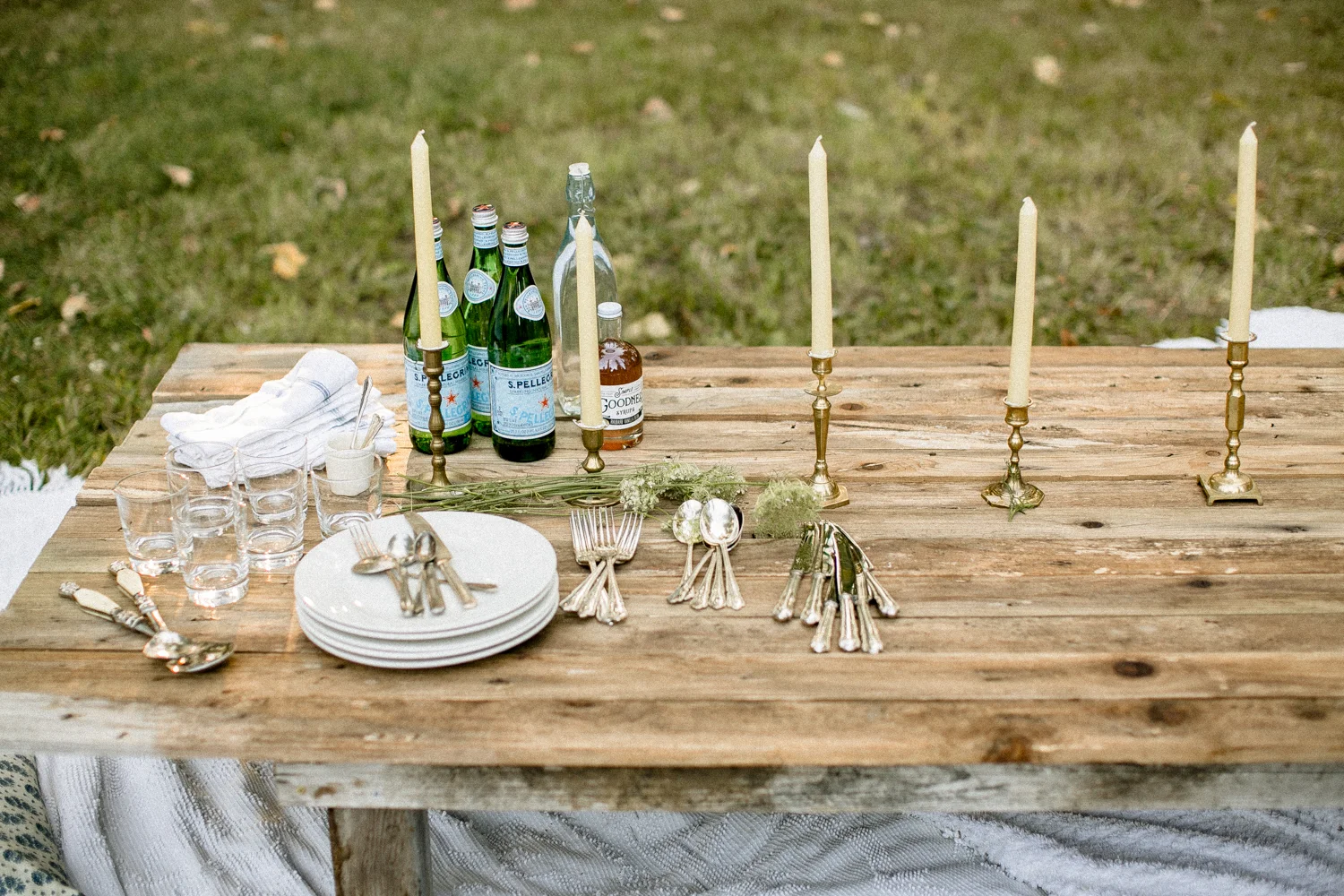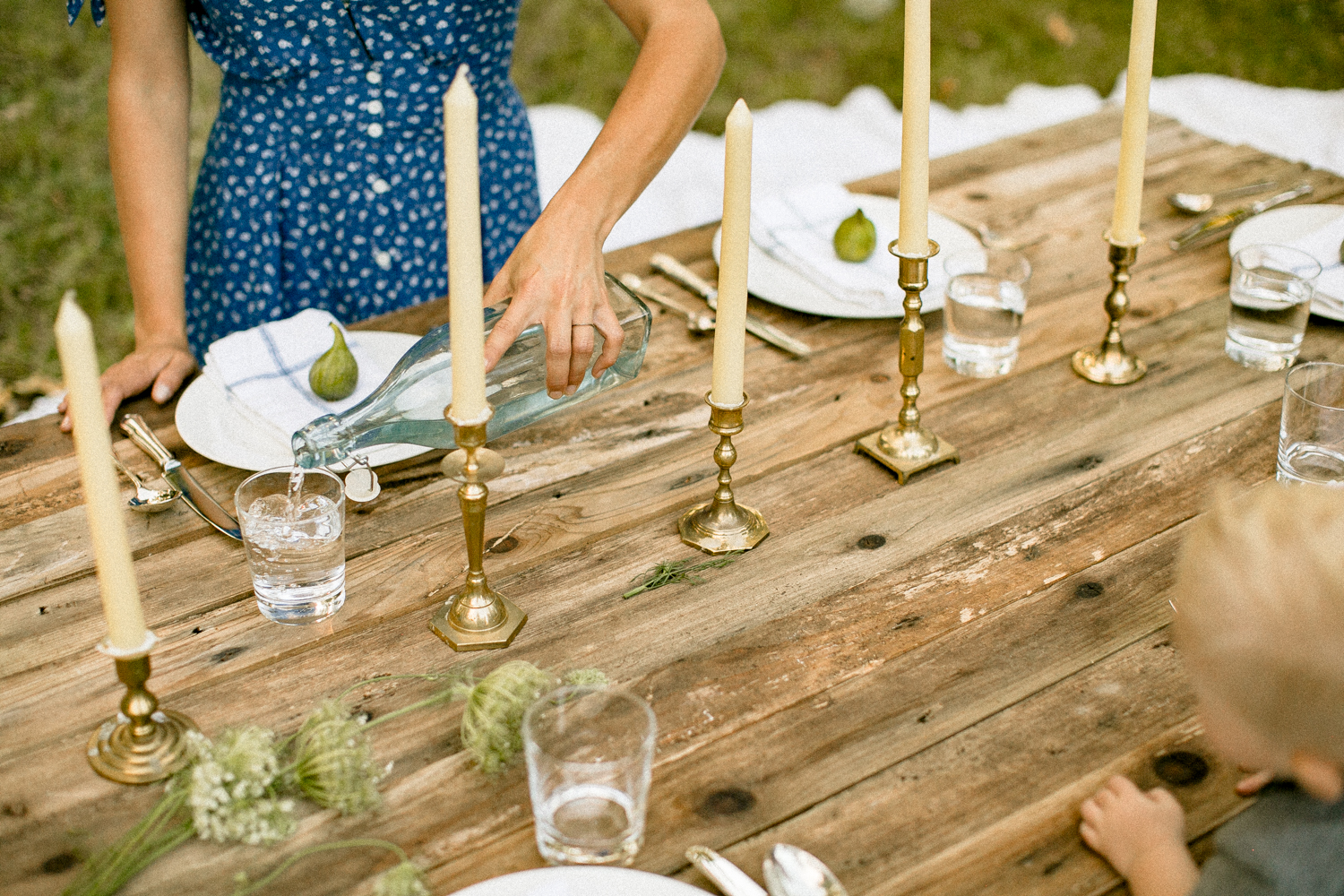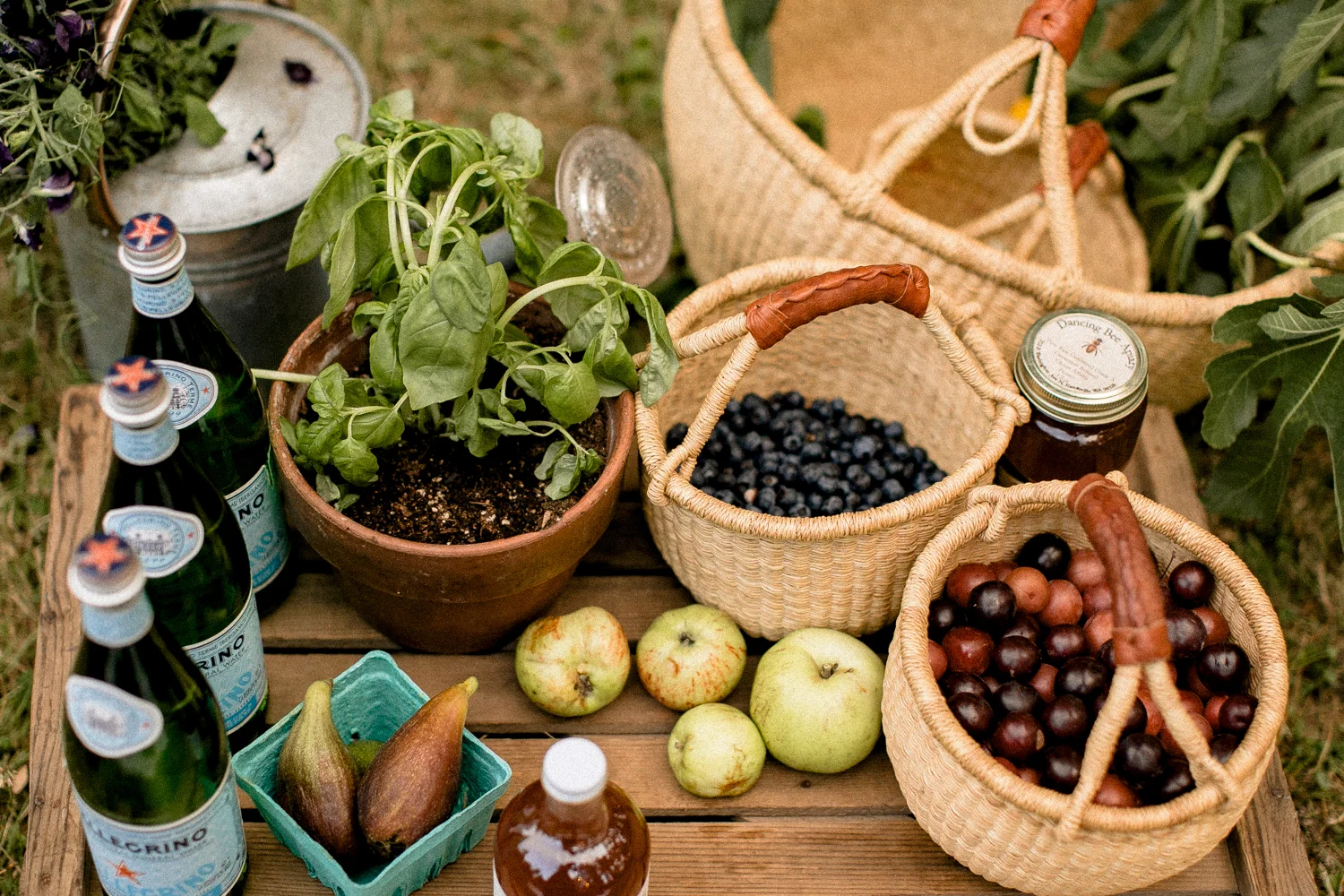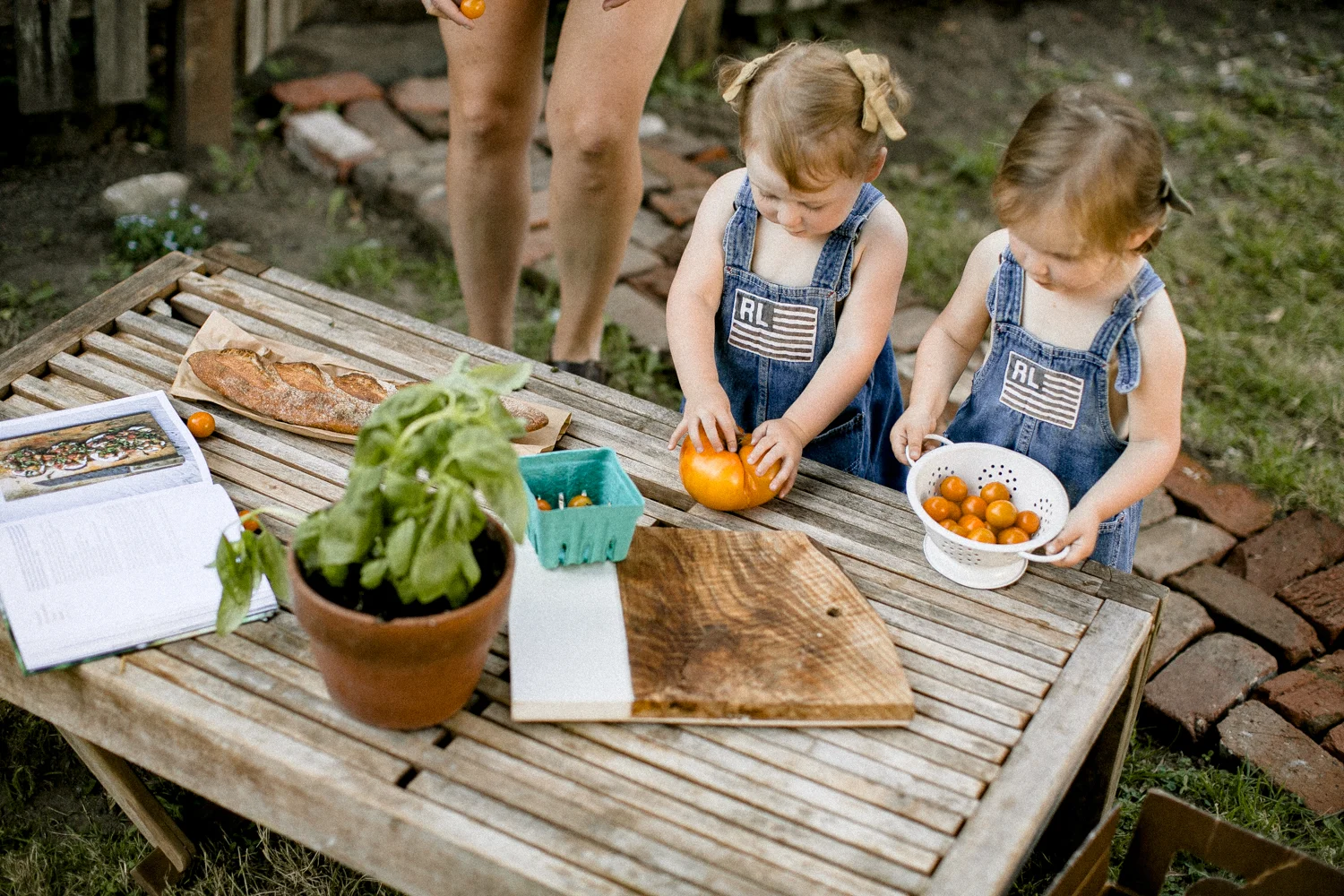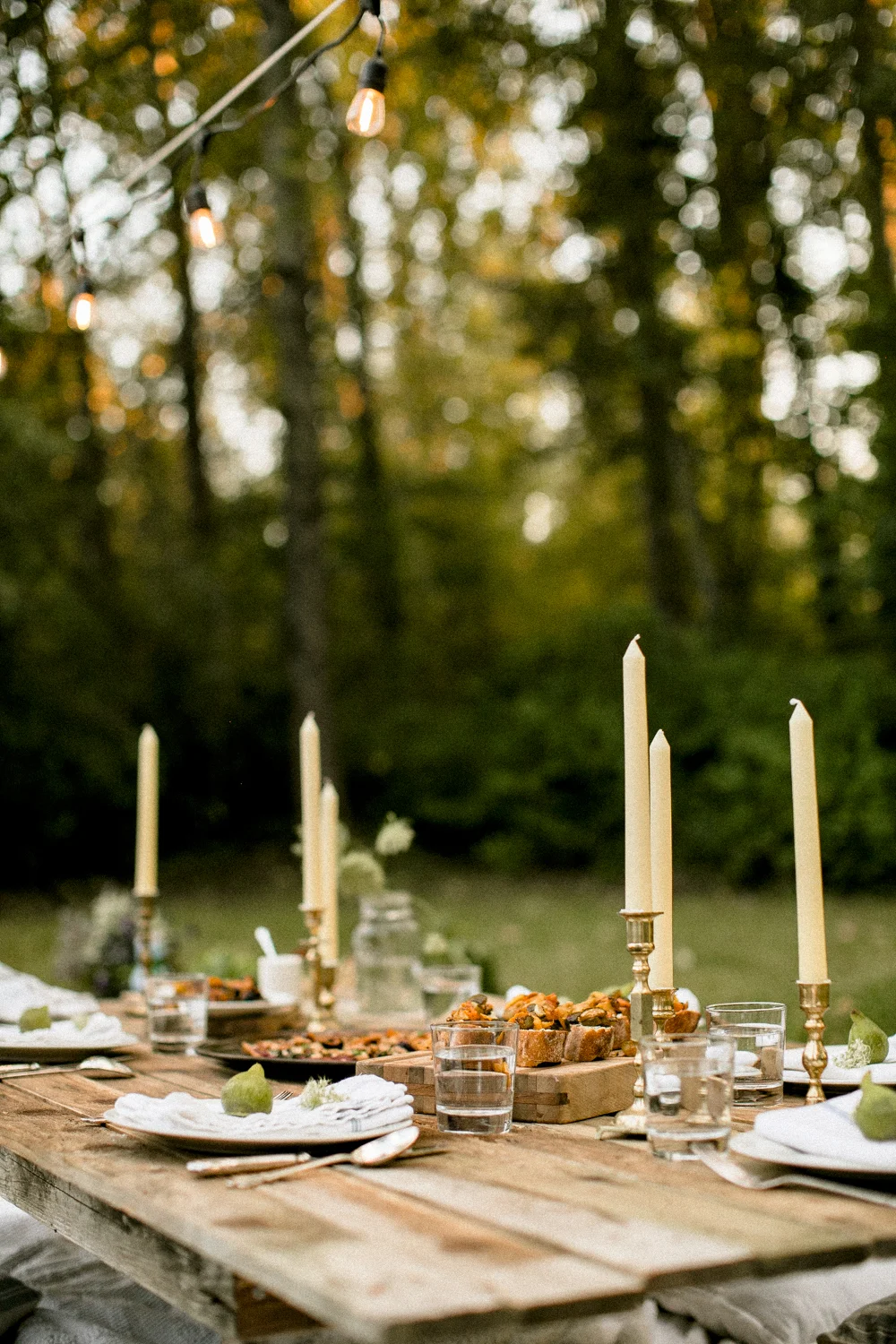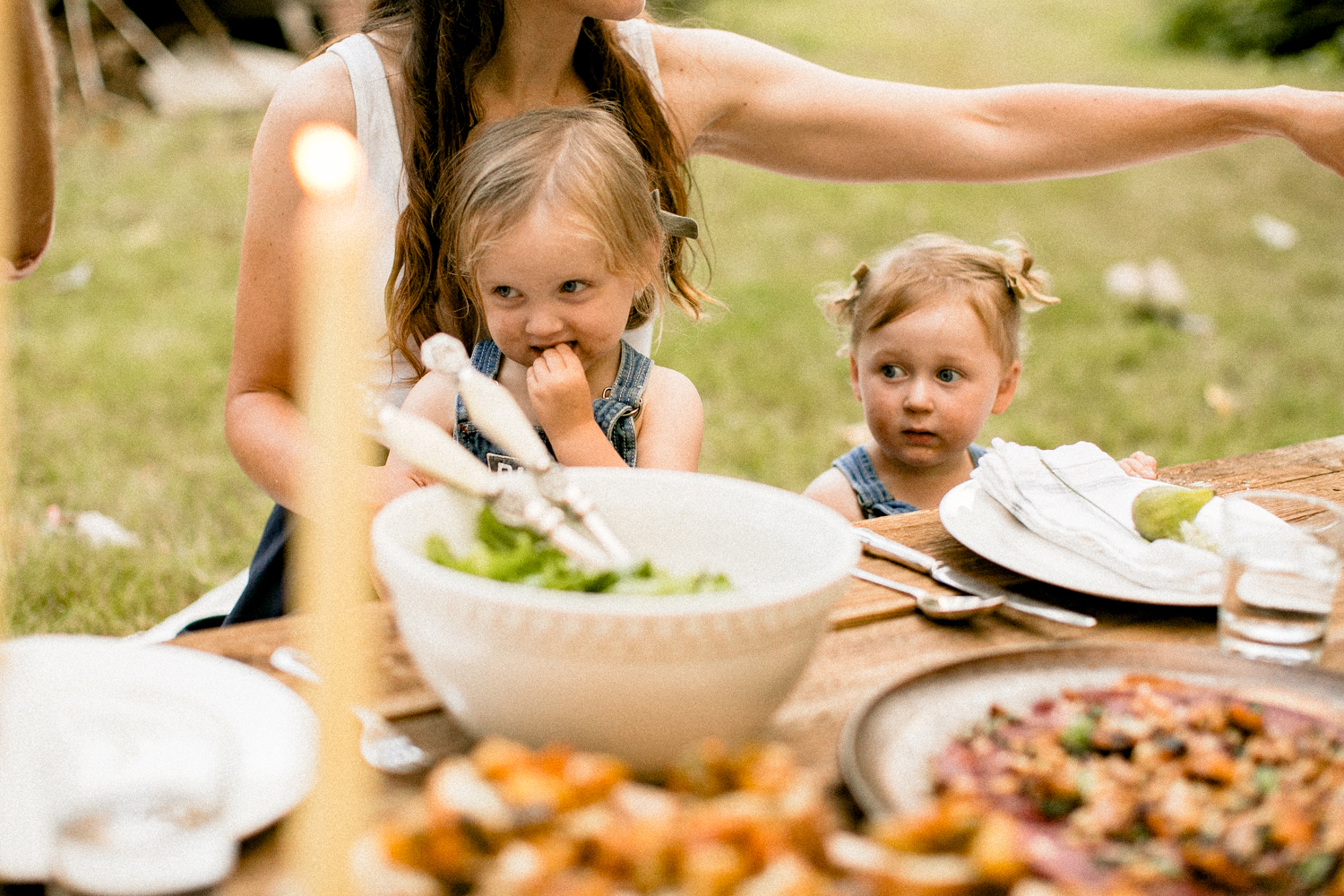Farm to Table Dinner : Hosting a Small Gathering
Four months ago we began a journey to eating local and in season, inspired by the book Animal, Vegetable, Miracle, and aided by the recipes in the cookbook Dishing Up the Dirt.
I’ve got a lot to share about how we started and where we are in the journey and all the ways it’s challenged and surprised us—and I will, in due time.
But right now I thought I’d the inspiration for hosting this small Farm to Table gathering.
You’ve seen those the beautiful, Pinterest inspired Farm to Table dinners. The long tables, florals garlands, food spreads and charcuterie boards, candles and bistro lights, mismatched farm chairs, and orchard settings. Truly every picture is something out of a dream—especially for the photographer and romantic in me. I love it all, I really do.
But those are big production events, and lovely as they are, it’s not exactly what I’m looking for. My dream is to celebrate the seasons, the farmers, the makers, and the friends that make this life so beautiful—in an intimate, community based, and attainable way, with a touch of whimsy.
Attainability, being the key to brining this all together, I wanted to create an experience that would affordable, local, delicious (for adults and toddlers), and most of all, memorable.
They say, creativity is born from limitation, and our Farm to Table dinners will be our tribute to both.
Planning a Farm to Table Dinner:
Decide when you want to host—and determine what fruits and vegetables are in season.
Pick a few recipes that highlight your ingredients and prepare your shopping list.
Make a note of where to shop/when: Farmers markets, CSA, CO-OP, etc. For best freshness and flavor, try to pick up your food within a couple days of your meal and be sure to store it apporpriately.
Think of creative ways to access local food: Who do you know with fruit trees, a vegetable or herb garden, or fresh eggs. Often you’ll find friends who grow food are delighted to share, or you may even be doing them a favor by taking a bag of apples from their over-productive tree. Share your vision for the dinner and don’t be too shy to ask.
Plan your guest list. I personally find the most attainable way to host a dinner is to keep the guest list small. (I’d rather host a number of small dinners than one large dinner). This eliminates the idea of an event rather than a dinner, takes away the need for a ton of food, keeps the cost down and the preparations attainable, and allows for more connectedness amongst the whole group.
Think of ways to involve your guests [and children]: food prep, styling, etc.
Plan your location + details like table, chairs (or pillows), proximity to the kitchen, etc.
Planning your Menu:
Don’t overcomplicate it.. You’re using a host of fresh ingredients so they will be packed with flavor. Select a few recipes that highlight these flavors and prepare a meal that you will LOVE!
Our Menu:
Ratatouille Toast
1 large heirloom tomato (CSA)
1 pint of cherry tomatoes (CSA)
1 medium summer squash (CSA)
1 medium zucchini (CSA)
1 Green onion (CSA)
4 cloves of garlic (home garden)
1/2 cup fresh basil (home garden)
1 rustic sourdough baguette (CSB)
and a handful of pantry spices and oils.
*Full recipe in Dishing Up the Dirt.
Beet, Walnut & Kale Pizza (Beetza!)
3 medium-sized beets (CSA)
4 Tbs Walnut Oil- (CO-OP) We can’t get that locally but I purchased one that came from California so it’s at least on the same coast as us.
1 medium green onion (CSA)
1 clove of garlic (home garden)
1 bunch of Kale (home garden)
cherry tomatoes (CSA)
walnuts (CO-OP: CA grown)
Homemade pizza dough and a handful of pantry ingredients + vegan cheese.
* Full recipe in Dishing Up the Dirt.
Garden Salad
head of lettuce (home garden)
purple carrots (CSA)
cucumber (CSA)
green onion (from the stalks of the onion we used on the pizza and toast)
kale (home garden)
Walnut oil (CO-OP)
cherry tomatoes (home garden)
Homemade Ice cream
(this was my big exception on local eating, because of dairy restrictions in our diet, but we did use local ingredients where we could).
2 cans organic coconut milk
1/2 cup local honey
2 TBS vanilla extract
blueberries for topping (picked from a local farm)
fresh figs for topping (from a friends tree)
rhubarb-vanilla simple syrup for topping (local maker)
Tips for styling from my beautiful friend and talented event designer, Fiona Louise Design.
-keep it simple and fresh
- use fresh produce or herbs and wildflowers for decor
- shop your house
- candles are a must! (you can’t beat real candle light in my book ✨)
- pretty platters, cutting boards, and bakeware can really elevate the whole look with minimal effort
** I wanted to add that when it comes to gathering your supplies, if you don’t have something, call your friends. They most likely have exactly what you’re looking for and would be happy to let you borrow it. If they don’t have it, shop second hand—You’d be amazed at how many pieces you can find and how little you need to spend. If you can’t find it second hand, get creative and find another alternative. You almost never need to buy something brand new.
Put together an “essentials” list, and a fun “extras”. Here’s an example Fiona shared with me:
Classic essentials:
Silverware
Plates
Napkins
Glasses
Water kraft or pitcher
candles/candlesticks + holders (lighter/matches)
Serve-ware (extras):
-wood cutting boards, ceramic/stone platters, metal and/or ceramic bakeware
pretty serving utensils
bowls (Depending on what you’re serving)
Two of the biggest concerns that come up when I talk about farm to table meals, are cost and time.
There’s this idea that because it’s local, its got to be more expensive. And perhaps thats is true if you are doing a direct comparison of local organic produce vs imported conventional produce. But if you get creative and keep things simple, you’ll find yourself hosting a very budget friendly, community supported meal.
Here’s our breakdown (as best as I can)
Food:
CSA Box-all of our purchased veggies: $26
U-Pick Blueberries: $5
Baguette from our CSB (community supported bakery) subscription: $4
CO-OP- Walnut oil, Walnuts, vegan cheese: $22
Local honey: $20
fruit from the garden for snacking-apples, plums, strawberries: $0
figs from our friends tree: $0
Decor:
Table (built by my husband out of scrap wood we had on hand): $0
Decor-shopped from home or brought by Fiona: $0
Candles-handmade in Pennsylvania: $36
We recently moved into an RV (or our tiny dwelling as I like to call it), so we are limited on a number things (like four of each dish). But I’ve come to a place where I enjoy the community aspect of borrowing and sharing the things we need for special occasions. It feels a bit like a part of history thats been lost with our ability to buy anything, anytime.
All in all, we spent $77 on food—this is with the exception of the few pantry ingredients I already had on hand. And there were a handful of things left over to continue enjoying beyond that one meal.
And after all was said and done, we hosted, feasted, and delighted in the summer evening of our dreams spending a grand total of $113 (just over the national average of $101.81 for a dinner date for two) to feed 5 adults and 3 hungry toddlers.
As for time, preparing fresh food is more of a commitment than pre-washed packaged food. But for me, thats all part of the process of slowing down. It’s one of the best parts of the experience, and as my friend Shelby and I were preparing the dinner, she told me that she’s come to love how getting her hands dirty with the fresh crop makes her feel more connected to it. I’ve learned to love the time it takes to gather, clean, chop, and prepare our food—it’s become a sacred time for me.
A few other thoughts and reflections.
For me, it’s been very important to involve my toddlers in the whole process of eating local and in season. We go to the farm together every Friday to pick up our box of veggies (bedgies as they call them), they help clip flower and herbs, and we talk about every vegetable or fruit by name as we turn them into meals or snacks. They’re almost always eager to try each one, they usually love it and I never force them if they aren’t interested.
They say many hands make light work, but I’m sure they weren’t talking about toddler hands. While its slow and can feel inconvenient, I really love to have them “help” make our meals. Sometimes that’s picking food out of the garden, and other times its cracking eggs, or counting tomatoes. I think it connects them with the food, builds anticipation, and enhances the whole eating experience—and I feel it does the same for me. All the while, it reminds me of our intentions for slow living—and it slows me down even more. And when I watch them pretend to go to the farmers market, make kohlrabi for dinner, or ask to “pick a couple straw babies” out of the garden, I know that it’s all worth the investment of time.
I also thinks it’s important to remember to celebrate the joys of life outside of big events. Especially in a day where we are so inundated with everyone else beautiful life, we have to be intentional about bringing that magic off the screen.
It doesn’t have to be “perfect” to be perfect. What I mean is, you won’t have every last detail that you’d like, and thats okay. Because at the end of the day, you will have a lovely gathering, full bellies, happy hearts, and you’ll close the night out with babies up way past bed time, And you’ll have a dance party as everyone helps clean up, and you’ll breath in the sounds of laughter (those deliriously giggly toddlers), and the clinking of empty plates, and you’ll realize that these are the days you’ve been dreaming of, and they are right here. YOU’RE IN IT. And you’ll stop and let that sink in, down to your bones and deep into your heart, until you feel like you could burst with gratitude for Amy and Augustine who give their all to the farm and fill your plate with the best veggies, and for Ashley who strives to hold onto and share the old craft of making real bread, with a deep gratitude for the grain farmers and millers who also strive to hold integrity in their farming and processing techniques, and for Fiona and Shelby who loved the vision as much as I did and came with hands ready to help and hearts fully engaged, and for the family I feel so overwhelmingly blessed by it brings me to tears—yes you burst, and let the tears of joy carry you into the sweetest sleep where you dream of more of this—more celebrations of the beautiful, ordinary, whimsical parts of life.
So don’t wait for next summer, or for when you’ll have the perfect place, or better decor or more time to plan.. Do it now. Make time, invite your people, take your favorite basket and fill it up at the farmers market, take a moment to talk to the farmer, ask them about their fruit and veggies-you’ll be grateful you did, go for a walk and ask your neighbor if you can pick a basketful of apples, thumb through some old family recipes or that beautiful cookbook you have on your shelf, make a playlist and let the music guide the rhythm of your day as prepare to gather with your best, feast on the seasons best, grown by the communities best.

